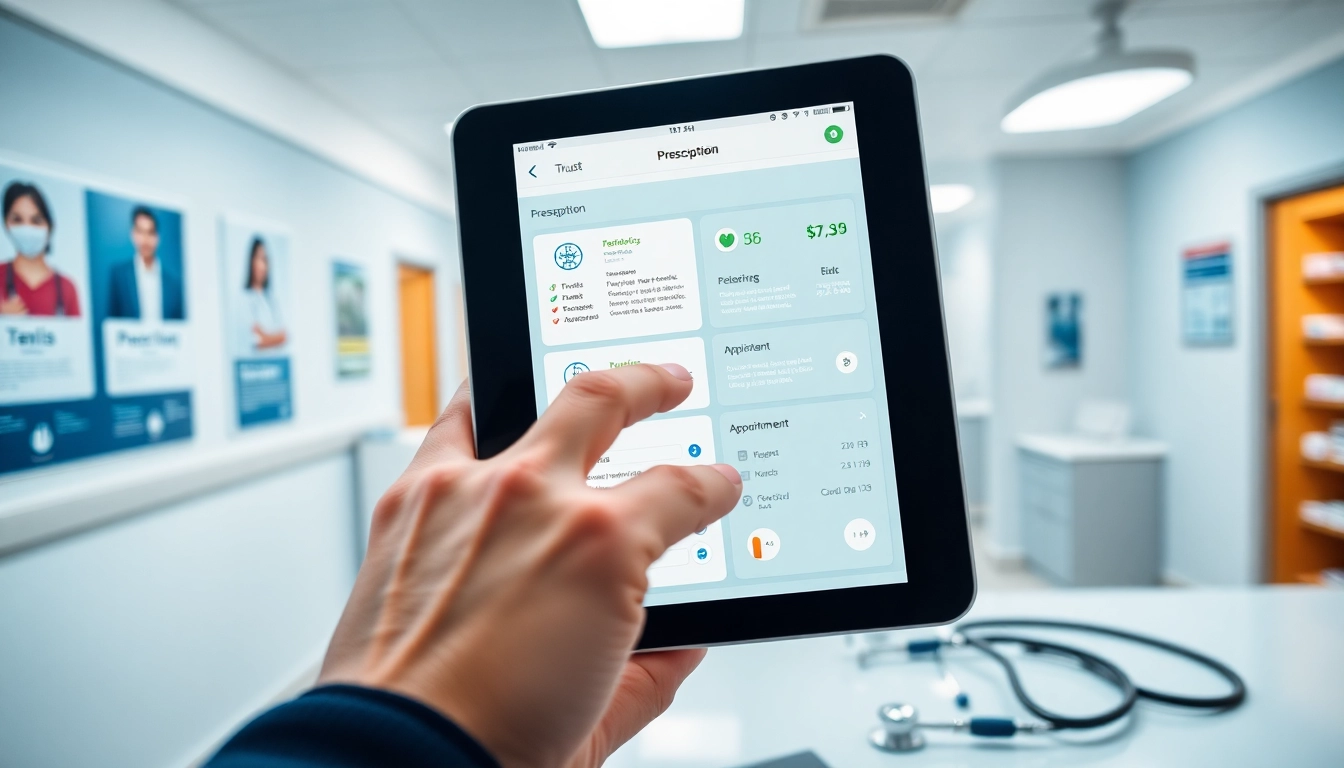What is E-Prescribing?
Definition and Purpose
E-prescribing, also known as electronic prescribing, is the process of sending prescription information electronically from a healthcare provider to a pharmacy. This method replaces traditional paper prescriptions with a digital format that enhances the accuracy and efficiency of prescribing medications. At its core, e-prescribing aims to improve patient safety, simplify the medication dispensing process, and streamline communication among healthcare stakeholders.
Importance in Modern Healthcare
As healthcare continues to embrace digital transformation, e-prescribing stands out as a vital component in ensuring effective patient care. The significance of e-prescribing lies in its ability to reduce medication errors, streamline workflows, and enhance overall patient outcomes. By eliminating issues like illegible handwriting and lost prescriptions, e-prescribing ensures that patients receive the correct medications in a timely manner. Moreover, it facilitates better prescription management, allowing pharmacists to access patient records swiftly and efficiently.
Key Components of E-Prescribing
- Prescription Management Software: This software enables healthcare providers to create, review, and manage electronic prescriptions.
- Pharmacy Connectivity: E-prescribing systems connect directly to pharmacies, allowing seamless transmission of prescription data.
- Clinical Decision Support: This feature provides alerts for drug interactions, allergies, and other safety measures, further enhancing patient safety.
- User Authentication: Secure logins and electronic signatures ensure that only authorized personnel can access and send prescriptions.
How Does Eprescribing Work?
Process Overview
The process of e-prescribing begins when a healthcare provider inputs the patient’s prescription information into their electronic health record (EHR) system or a dedicated e-prescribing application. This system is designed to be user-friendly, allowing quick access to medication databases, dosing guidelines, and patient allergies. Once the provider finalizes and electronically signs the prescription, the system transmits it to the patient’s selected pharmacy.
Upon receiving the prescription, the pharmacy verifies the details against its database and prepares the medication. The whole process is typically completed within minutes, significantly faster than traditional methods that require phone calls or faxing paperwork. Patients can then visit the pharmacy at their convenience to pick up their prescriptions, often without delays.
Technological Integration
Successful e-prescribing depends on various technological integrations that support secure data transfer between providers, pharmacies, and patients. Systems utilize health information exchange (HIE) technologies, which allow for secure sharing of patient records. With the right integrations, providers can access patient medication histories, medication allergies, and any previous adverse drug reactions directly within their prescribing software.
Role of Electronic Health Records
Electronic Health Records play a pivotal role in the e-prescribing process by serving as the foundation where all relevant patient data is stored. Through the EHR, healthcare providers can quickly pull up patient information, track medication history, and confirm any ongoing treatments, thus reducing the risks of drug interactions and duplicative therapies. This comprehensive view will not only streamline the e-prescribing process but also equip providers with the tools necessary to make informed prescribing decisions based on a patient’s individual history.
Benefits of E-Prescribing
Improved Patient Safety
One of the primary benefits of e-prescribing is the substantial improvement in patient safety. By eliminating handwritten prescriptions, which can often be misread, e-prescribing minimizes medication errors. Furthermore, integrated clinical decision support tools within e-prescribing systems provide real-time alerts regarding potential drug interactions, allergies, and contraindications. These additional safeguards ensure that patients are prescribed safe and appropriate medications, which is crucial for those with complex health conditions.
Increased Efficiency
E-prescribing significantly enhances the efficiency of the prescription process. Traditional methods often involve time-consuming paperwork and phone calls, creating bottlenecks that delay patient access to essential medications. In contrast, e-prescribing enables providers to quickly generate prescriptions and send them directly to a pharmacy with minimal effort. This streamlined workflow not only saves time for both providers and pharmacists but also enhances the patient experience, allowing for quicker access to medications.
Cost-Effectiveness
The adoption of e-prescribing can lead to cost savings for healthcare systems, pharmacies, and patients. By reducing medication errors and improving the efficiency of workflows, healthcare providers can lower their operational costs while enhancing patient outcomes. Moreover, e-prescribing can facilitate medication reconciliation, thus decreasing the likelihood of adverse drug events that may result in costly hospital visits. Ultimately, when patients receive their medications promptly and safely, it contributes to more effective disease management and better overall health outcomes, reducing long-term healthcare costs.
Challenges and Solutions in E-Prescribing
Common Issues Faced by Providers
Despite its many benefits, e-prescribing is not without challenges. Many providers face issues related to integrating e-prescribing systems with existing electronic health records, leading to data inconsistencies and workflow disruptions. Additionally, some providers may experience resistance to change from staff accustomed to traditional prescribing methods. Furthermore, technical issues such as software glitches or connectivity problems can impede the e-prescribing process.
Overcoming Technical Barriers
To address the technical barriers, healthcare systems can invest in robust training programs for staff to facilitate a smooth transition to e-prescribing. This training should cover the basics of using e-prescribing software as well as tips on troubleshooting common technical issues. Additionally, clinicians should advocate for the adoption of standardized e-prescribing protocols, which can minimize software compatibility problems across different systems and ensure a smooth exchange of prescription data.
Ensuring Patient Privacy and Security
With the rise of digital health solutions, managing patient privacy and the security of sensitive health information is critical. E-prescribing systems must comply with regulations set by the Health Insurance Portability and Accountability Act (HIPAA) to safeguard patient data. Regular audits and updates to security protocols, along with staff training on the importance of data privacy, can help to mitigate risks associated with data breaches. Furthermore, utilizing encryption technologies during the transmission of prescription data ensures that sensitive information remains protected.
The Future of E-Prescribing
Innovations on the Horizon
As technology continues to advance, e-prescribing is likely to evolve with innovations that improve usability and interoperability. Artificial Intelligence (AI) tools are emerging to assist providers in making more accurate prescribing decisions by analyzing vast amounts of patient data. Additionally, advancements in mobile technologies may allow patients to manage their prescriptions and communicate directly with healthcare providers via mobile apps, thus enhancing patient engagement.
Potential Regulatory Changes
Regulatory landscapes are continuously changing as healthcare systems adapt to these technological advancements. New policies concerning e-prescribing practices may emerge, such as mandates for wider adoption of e-prescribing in controlled substances, which can enhance the tracking of prescriptions and curb prescription abuse. Keeping abreast of these regulatory changes will be crucial for providers as they navigate the complexities of e-prescribing compliance.
Long-Term Implications for Healthcare
The long-term implications of widespread e-prescribing adoption could reshape the healthcare landscape significantly. As more providers incorporate e-prescribing into their practices, we can anticipate improved healthcare outcomes, reduced medication errors, and enhanced operational efficiencies. Furthermore, with the growing trend towards value-based care, e-prescribing will play a pivotal role in fostering better patient adherence to therapy regimens, ultimately leading to healthier populations and lower healthcare costs overall.
As you can see, understanding how does eprescribing work is pivotal for anyone involved in healthcare. Embracing e-prescribing not only enhances the provider’s workflow but also ensures that patients receive safe, timely, and effective medications, marking a significant advancement in patient care.




